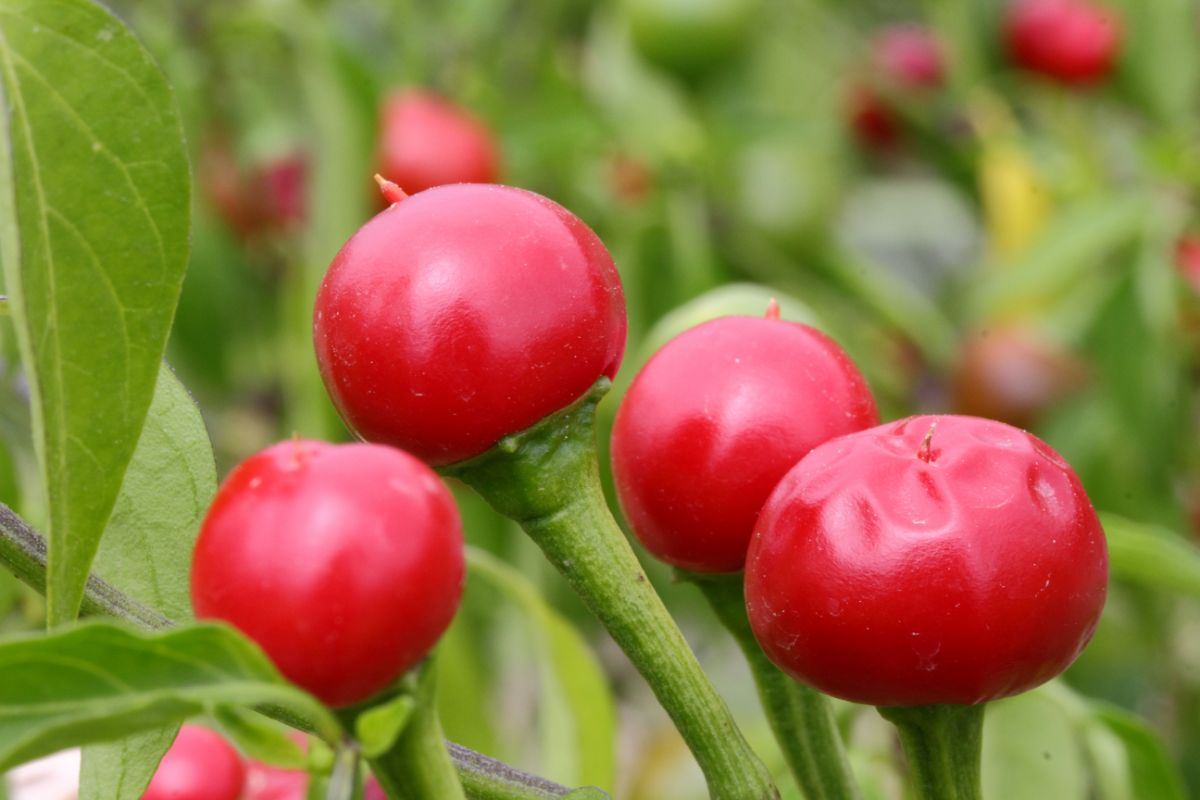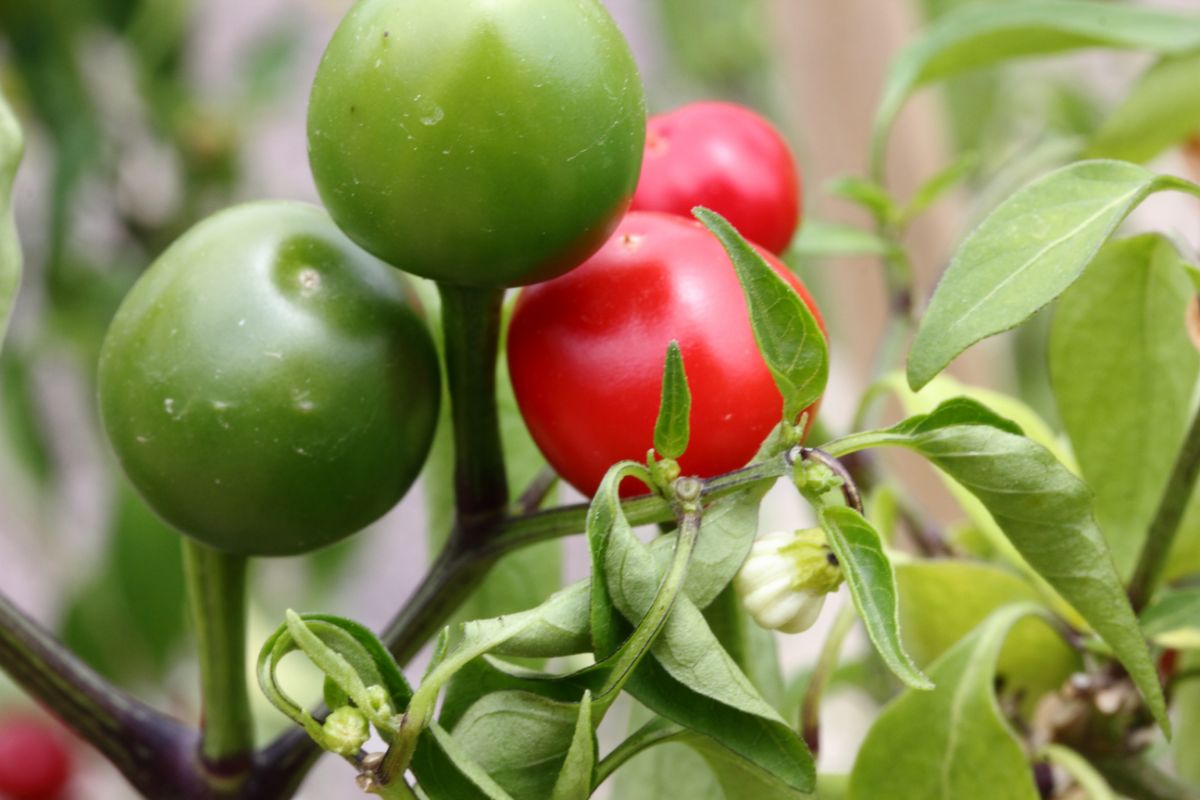
Do you like spicy food? Then surely you like chili. HoweverMaybe you don't know that there are different types of chili, one of which is the cherry bomb. What do you know about him?
With the scientific name Capsicum annuum, we are going to introduce you to this variety of pepper or chili so that, if you have the opportunity, you can find it, differentiate it, cultivate it and, if you dare, also try it. Go for it?
How is the cherry bomb

First of all, and what we are going to start with, is to know more about the cherry bomb. Although we have told you about its scientific name before, in this case there are other more common names by which it is also known: cherry bomb pepper, cherry bell pepper, sweet cherry chili pepper or Hungarian cherry.
It is native to Central America and South America. Its natural habitat is often both hot and humid, so it can be cultivated in many parts of the world. For example, in Europe it is usually put in the gardens.
Aesthetically you have a plant that is not too large in terms of height, since it will be close to 50-60 centimeters. The fruit it bears is that of a pepper, not too large, but it looks more like a cherry or a cherry tomato. Its flavor is sweet, but know that this can be very tricky because it has a touch of spiciness that can range from very mild to stronger (depending on the crop, the plant, etc.). At first, these peppers are green, and as they mature, they turn red. In addition, inside you can find many seeds, these are cream-colored and round in shape.
How to grow cherry bomb in the garden

If you have an orchard and a place to plant the cherry bomb, and if you also like spicy things, we are going to leave you a guide so you can do it. Here you will find everything you need to take into account to produce a production in a matter of 2-3 months. Do you dare to try?
Location and temperature
Know that The cherry bomb chile plant needs sunlight to develop properly. Now, it's not always that easy. And it is that, if it is too hot, it is better to put it in a semi-shade place than in one with direct sun.
And it is that the ideal temperature to have this plant and that it germinates is between 18 and 32 degrees Celsius. While, if what you want is for it to grow, it will have to be between 14 and 25ºC. This will help you a bit to choose the best location for the plant.
Substratum
Make sure you give it a soil that maintains moisture, but at the same time has good drainage. If you also add some compost, this will boost its growth. Thus, we recommend that you make a mixture with all of this before planting them. A little trick that many professionals use is to "warm up" the soil before putting in the seeds or seedlings.
You'll see, you just have to, a week before planting, place a black plastic on the ground so that it warms up during those days. And why is it done? This way you will make germination faster and also have a greater probability that it will succeed.
Irrigation

As a plant that it is, and taking into account that keeping it moist is important, we cannot doubt that you should be aware of when it needs water. It is not convenient for the soil to dry out, so we recommend you follow an irrigation pattern.
Also, if the weather in your area is hot during the day, but cool (and humid) at night, it will be perfect and you won't have a problem getting it going.
That means yes, it needs some humidity, at least at night. If you see that you cannot provide it naturally, you will have to opt for a humidifier or similar to ensure that the fruits it gives are of the best possible quality.
Subscriber
As we have mentioned in the part about the substrate, compost is the best fertilizer for the cherry bomb because that way you will give it the energy it needs to grow, develop and bear fruit, which is the objective you have.
During the spring and summer months it will develop, so if you have planted it, it may not need more fertilizer. But if you notice that the plant is going to have a fairly large production, to prevent it from running out in a short time (and not getting all the chilies out), it would be good to give it at least once a little more compost. Of course, do not put it on first thing in the morning, it is better at the end of the day because that way you make sure that the sun cannot affect it too much and, with it, that it forces the plant.
Plagues and diseases
The cherry bomb is a plant that has problems with pests and diseases. It is not as resistant as other plants, which means that you will have to be very aware of them.
In the case of pests, the most important and that have a very negative effect on it are the red spider mite, beetles, pepper weevils, aphids, thrips or leaf miners.
On the other hand, diseases that you should be more aware of are root rot, downy mildew, black mold, wilting or pod rot.
Picking the fruits
Approximately 2-3 months after planting them, and if everything went well, you will already have these chiles to pick. In general, they usually measure about 6 centimeters long and 3 in diameter. Of course, there may be smaller or larger.
When you notice that they begin to turn red, it is that they begin to mature.
As you can see, the cherry bomb is not a variety of pepper that is difficult to care for and if you like things spicy this may be one of your favorites. If you try, tell us how they turned out for you?